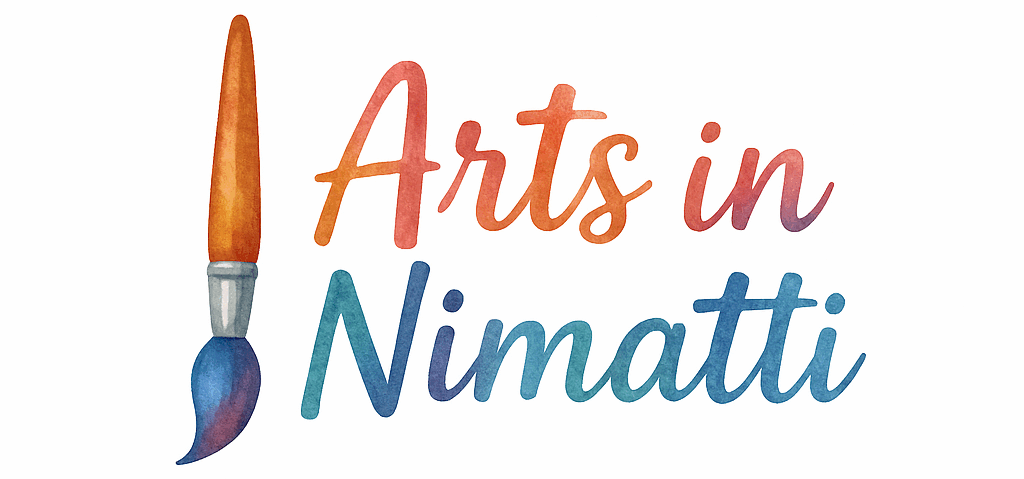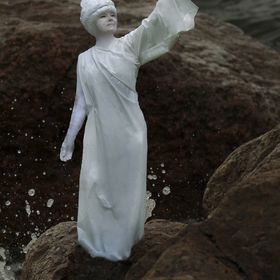Introduction to Layering in Art
Layering is a technique used by artists to create depth, texture, and vibrancy in their artwork. Whether you’re working with acrylics, oils, or watercolors, layering helps to build up rich, complex imagery. Mastering the art of layering can transform your paintings, allowing for more intricate, dynamic, and detailed designs. In this guide, we’ll walk you through 9 essential steps to help you master the art of layering, regardless of your medium or style.
Understanding the Concept of Layering
What is Layering in Art?
At its core, layering involves applying successive coats of paint, ink, or other materials to a surface, building each layer to enhance the overall composition. The purpose of layering in art is to add depth, texture, and dimension, creating the illusion of complexity and richness. It’s a fundamental technique used across various forms of art—from painting to mixed media to digital artwork.
The Importance of Layering
Why Layering Matters in Art
Layering allows you to control the intensity and texture of your artwork. Through careful application, artists can create subtle transitions between colors, highlight intricate details, and even add a sense of movement to a piece. Layering also gives you the freedom to experiment and make adjustments, as you can always build on previous layers to correct or enhance your work.
Step 1: Choose the Right Medium
Understanding Different Art Mediums for Layering
The first step to mastering layering is choosing the right medium. Each medium behaves differently, affecting how layers interact with one another. Acrylics, oils, and watercolors, for instance, each require different approaches to layering.
Acrylics, Oils, and Watercolors
Which Medium Works Best for Layering?
Acrylic paints dry quickly, allowing you to build up layers rapidly, whereas oils take longer to dry, giving you more time to blend and adjust between layers. Watercolors, on the other hand, are known for their transparency, which can create stunning effects when layered correctly. Understanding the properties of each medium will help you choose the best one for your layered artwork.
Step 2: Prepare Your Surface
The Best Surfaces for Layering Art
Choosing the right surface is crucial for successful layering. For acrylic and oil paintings, a primed canvas is ideal, as it provides a sturdy base for multiple layers of paint. Watercolorists, however, should opt for textured watercolor paper to absorb the paint and allow for smooth layer transitions.
Canvas vs Paper
What Surface Suits Your Artistic Style?
Canvas works well for thicker paints and allows you to create bold, textured layers. Paper, especially high-quality watercolor paper, is more suited for fluid mediums like watercolor and ink, where layers need to blend seamlessly. Knowing your medium and the desired effect will help you choose the appropriate surface for your work.
Step 3: Start with a Solid Base Layer
The Importance of the First Layer
Your first layer should lay down a foundation for your artwork, establishing the main color and general structure. This initial layer is critical, as it helps to unify the entire composition and serves as a guide for subsequent layers.
Setting a Foundation
Tips for Creating the First Layer
When creating the base layer, use broad strokes to cover the entire canvas or paper. The goal is to establish the tone, mood, and direction of the painting without worrying too much about fine details. Let this layer dry completely before moving on to the next step to ensure smooth application of additional layers.

Step 4: Build Up Gradually
Creating Depth and Texture in Your Artwork
Layering is a gradual process. Each layer should add something new, whether it’s a subtle shift in color, a textured effect, or an element of detail. It’s important to build your layers step by step, rather than rushing to achieve depth all at once.
Layering Techniques
How to Achieve Smooth Transitions Between Layers
When applying each new layer, allow enough drying time between each coat. This ensures that the previous layer doesn’t get disturbed or mixed into the new one. You can also use different techniques like glazing or scumbling to enhance texture and create seamless transitions.
Step 5: Play with Transparency
Using Transparency to Enhance Your Layers
Transparency can add a whole new dimension to your artwork. By layering semi-transparent or transparent materials over one another, you can create depth, lightness, and intrigue in your painting.
Glazing and Wash Techniques
What Are Glazing and Washes in Layering Art?
Glazing involves applying a thin, transparent layer of paint over a dry layer, creating a luminous effect. A wash, on the other hand, is a dilute layer of paint that allows the underlying color or texture to show through. Both techniques are essential tools for achieving rich, translucent layers.
Step 6: Blend and Smooth Layers
Techniques for Blending Layers Seamlessly
Blending is key to achieving smooth transitions between layers. When blending, you can either use a soft brush or blending tools like sponges or cloths to soften the edges where different layers meet.
Using Tools for Blending
Blending Tools You Should Have in Your Art Kit
Invest in high-quality brushes and blending tools that allow you to manipulate the paint without disturbing the underlying layers. Experiment with different brushes—flat, round, or fan brushes—to create various textures and effects between layers.
Step 7: Add Highlights and Shadows
Creating Contrast with Highlights and Shadows
Contrast is what brings your painting to life. Highlights and shadows give your artwork a sense of volume and dimension, drawing the viewer’s eye to focal points and enhancing the overall composition.
Building Contrast
How Highlights and Shadows Affect Layering
When layering highlights and shadows, think about where the light source is coming from and how it affects the surrounding areas. Layering dark shadows next to bright highlights will create depth and make your composition feel more three-dimensional.
Step 8: Pay Attention to Drying Times
Understanding Drying Times for Different Mediums
Drying time is a critical factor when working with layered artwork. Acrylics dry quickly, which is great for building up layers rapidly, but it can also make blending more difficult. Oil paints take longer to dry, allowing for more time to manipulate layers, but they require patience.
Patience in Layering
Why Patience is Crucial When Working with Layers
Don’t rush the drying process. Allow each layer to dry fully before adding another to avoid smudging or disturbing the work you’ve already done. Patience ensures that each layer has the intended effect and contributes to the overall success of the piece.
Step 9: Final Touches and Refining
How to Finish Your Layered Artwork with Impact
The final layer is your opportunity to add finishing touches that complete your artwork. Whether you’re adding a subtle highlight, deepening a shadow, or refining a texture, these final details will pull everything together and create a polished, cohesive piece.
The Final Review
Checking for Cohesion and Depth in Your Finished Piece
Step back and assess your work. Make sure the layers blend seamlessly and that the overall composition is balanced. Refine any areas that need extra attention, and then step back to view your layered masterpiece from a distance.
Conclusion
Mastering the art of layering is a rewarding process that adds depth, richness, and texture to your artwork. By following these 9 essential steps—choosing the right medium, preparing your surface, building layers gradually, and refining your technique—you can unlock a whole new level of creativity in your art. So, grab your brushes and paints, and start layering your way to artistic mastery!
FAQs
- What is the best medium for layering art? Acrylics, oils, and watercolors each have their strengths, but oils are particularly well-known for layering due to their slow drying time.
- How do I create depth in my artwork? By layering different colors and textures, you can create the illusion of depth, bringing your art to life.
- Can I layer with watercolor? Yes! Watercolors can be layered with techniques like glazing and washes to create beautiful transparency effects.
- How long should I wait between layers? Drying times vary by medium, but generally, wait until each layer is completely dry before adding the next to prevent smudging.
- How do I blend my layers seamlessly? Use blending tools like soft brushes, sponges, or even your fingers to soften transitions between layers.
- Should I start with dark or light colors? It’s often best to start with darker colors as your base layer and gradually build up lighter tones.
- Can layering be done in digital art? Absolutely! Layering is a key technique in digital painting, allowing for flexible and non-destructive edits.
For more inspiration and art tips, check out Art Inspiration and Art Education.
3/3
4o mini

